How To Use SEO Strategies To Build Website Traffic
Jan 21, 2022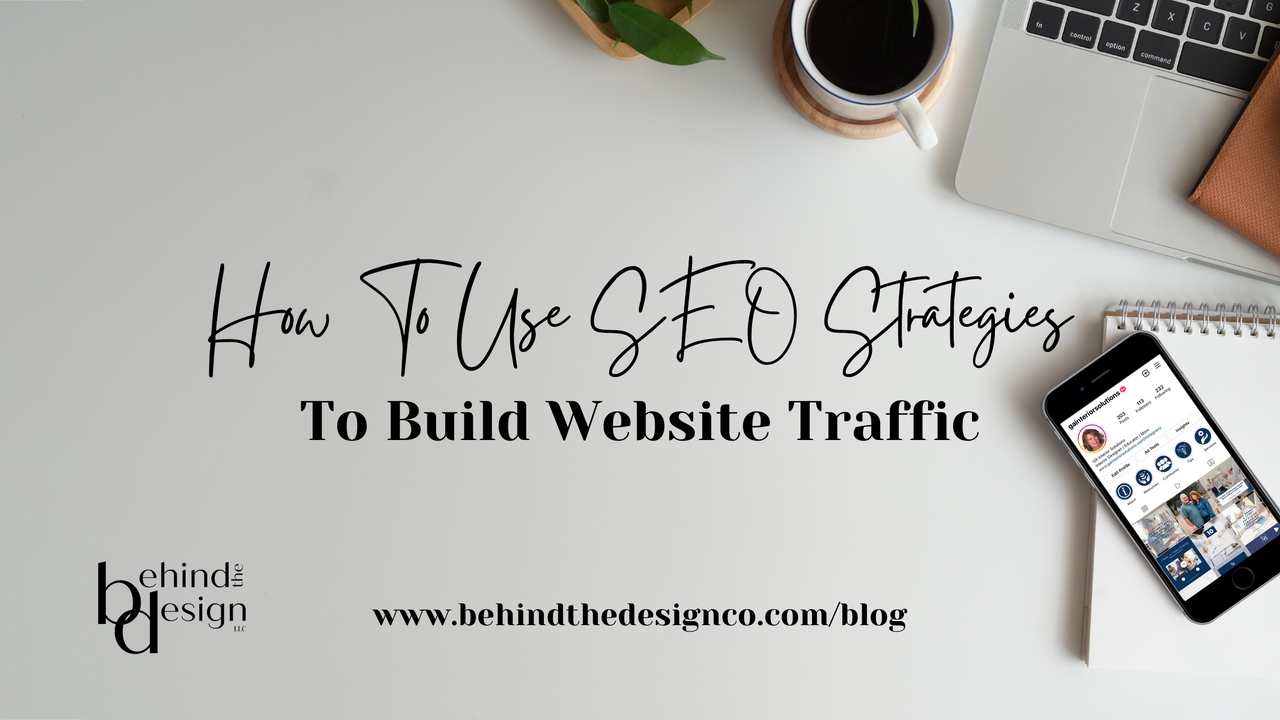
Interior design is much more of a mind game than people will ever realize. We’re all interior designers here, so I hope you can agree with me when I say that certain artistic methodologies “trick” our minds or at least reshape how we perceive interior spaces through certain elements and principles that we follow. In the same way, there are certain strategies and techniques that help you build your interior design website by reshaping how your target audience perceives you.
So if you’re currently struggling to drive web traffic and don’t know how effective a website can be to help you grow your interior design business, then you’re going to want to stick around for this. In this article, I discuss many different SEO strategies that you can use to start building your website traffic.
But first, let me share with you five SEO Statistics that will completely blow your mind…
- 80% of major purchases start with online research, even if the purchase itself happens in a store.
- 61% of B2B marketers stated that SEO and organic traffic generate more leads than any other marketing initiative.
- 70% of online marketers say that SEO is better than PPC for generating sales.
- 68% of online experiences begin with a search engine.
- 75% of people never scroll past the first page of search engines.

(Photo credit to Huffington Post)
1. Sitemap
So you have a website but you don’t find it anywhere in your Google search results? You probably haven’t told Google to crawl and rank your website. The first thing you’re going to want to do is submit your sitemap to Google. Submitting your sitemap directly helps Google’s crawl bots index your site, understand your website’s relevancy, and define your site’s ranking.
What is a sitemap?
Before I confuse you with these new words, what exactly is a sitemap? According to Hubspot, sitemaps detail the structure and webpages of your site in a format Google’s bots can understand. You can use your sitemap to indicate content hubs and internal links between pages. A sitemap guides the crawl bots through your site, showing them the most important pages. Remember, you want Google’s bots to crawl your site, so the search engine understands which search terms your website is most relevant for.
How to submit a sitemap to Google?
1. Sign in or Create a Google Search Console Account
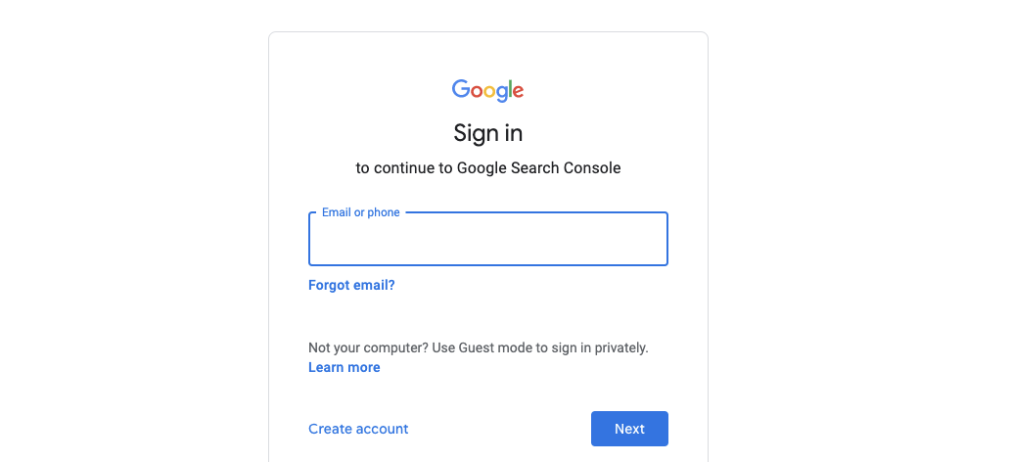
2. Select your website
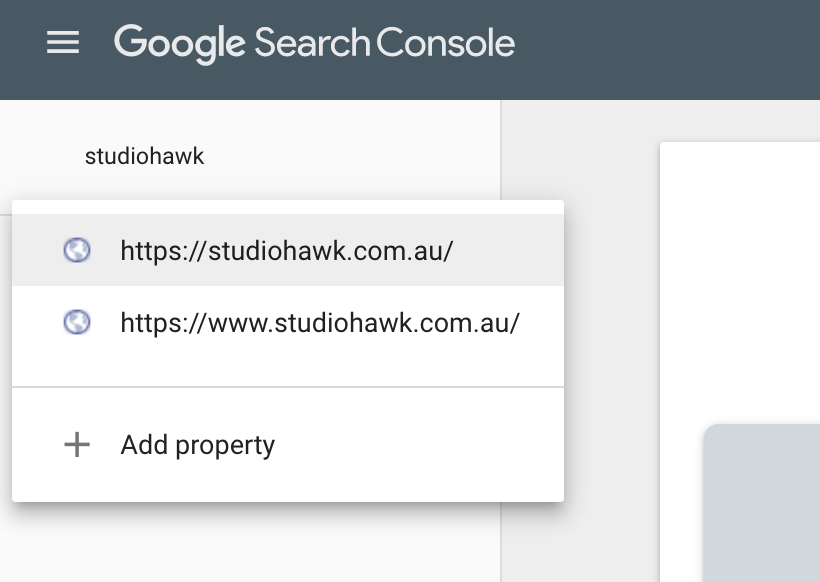
3. Select "Sitemaps"

4. Remove any invalid or outdated sitemaps

5. Add a new sitemap and click submit

2. Backlinks
Public Relations
Here’s the deal, if you want to rank on the first page of Google, you need to start building backlinks from authority news sites and blogs; this could be from publications, magazines, Houzz, etc.
One of my favorite ways to do this is with a free service called Help a Reporter Out (HARO). It connects bloggers and journalists with people like you and me that want exposure and backlinks. This strategy takes work and it's not always easy, but it's one of the best ways to build high-quality backlinks.

If you're interested, all you need to do is sign up on their website as a "Source" then choose their free service. From then on, every day you'll get emails sent to your inbox with requests from journalists based on the industries you selected. Finally, you can then start replying to requests by sending the journalists a brief yet valuable pitch.
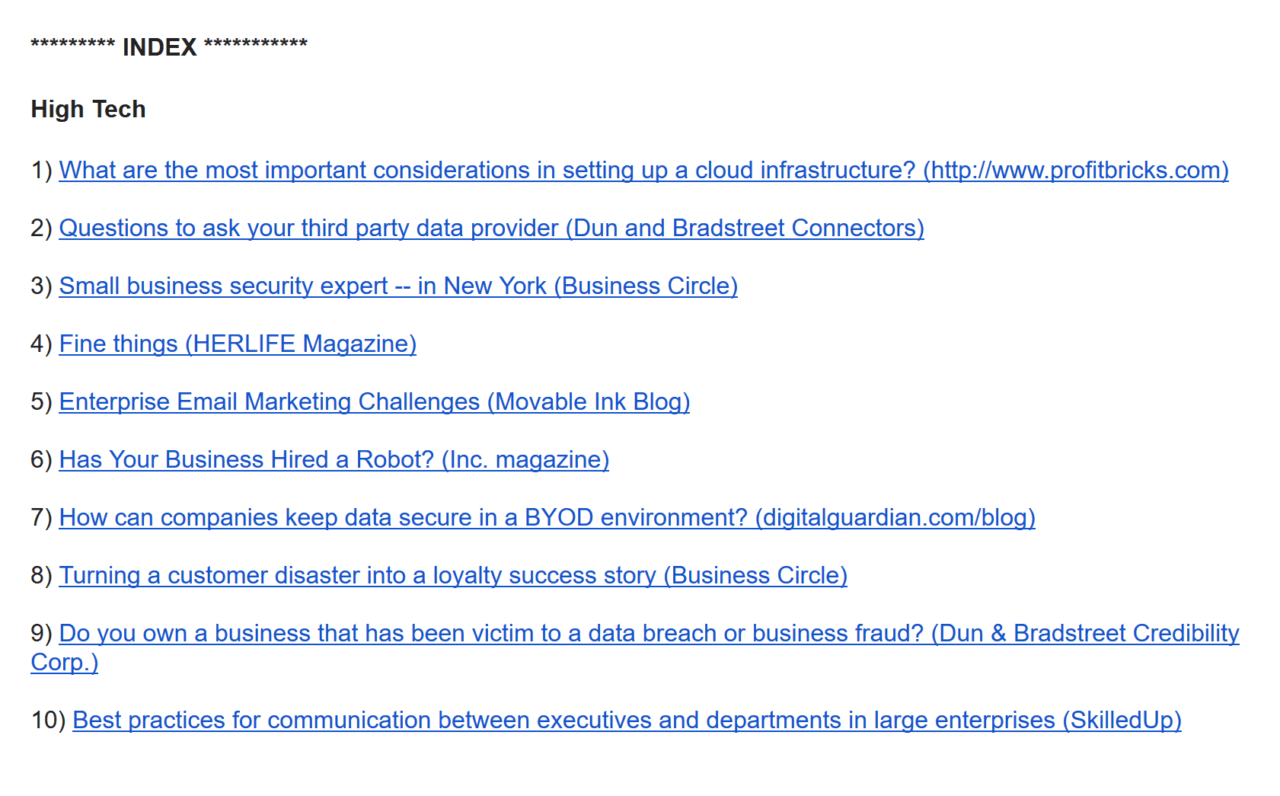
Guest Blogging
Another backlink strategy I have up my sleeve is guest blogging, and no guest blogging isn't dead! Let's back peddle to January 2014 when Google's Matt Cutts shared the now-famous post on guest blogging: The decay and fall of guest blogging for SEO.
Here’s the quote that everyone likes to reference:
“So stick a fork in it: guest blogging is done; it’s just gotten too spammy...I wouldn’t recommend relying on guest posting, guest blogging sites, or guest blogging SEO as a link building strategy.”
Pretty safe to say that guest blogging is dead then, right? Wrong! What many people fail to realize is that Matt makes it very clear that he is talking about a specific type of guest post. Let's take a look at the email he shared from such a guest post spammer:
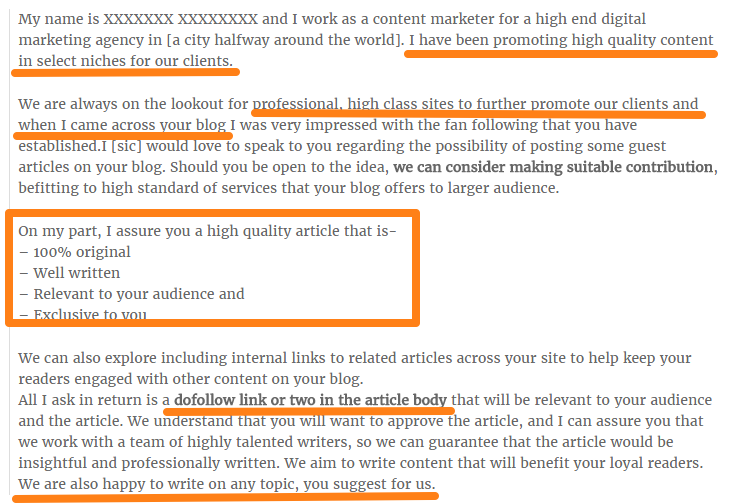
After reading this, it should be very clear that this type of guest blogger never cared about writing high-quality, authoritative posts, instead they only cared about how many of their own links they could put in the blog.
So what is the solution to this problem?
Easy: don’t guest blog for links. Instead, guest blog only when you have an original idea to share on a topic you already understand.
Any backlinks you get through guest posts should be a by-product of your content, not its sole purpose.
How to Start Guest Blogging
Before you start reaching out to hundreds of bloggers, let's cover a couple of quick tips. Influential bloggers already have their own content plans and goals, so start off by looking for their writing guidelines and carefully going over what the blog is asking for. Here's an example of my own blog's writing guidelines so you can get an idea.
Be Our Guest Blogger
Now you're ready to send your pitch email! Personally, I don't recommend using free templates you find online. Trust me, editors know how to sniff out disingenuous or emails made with no effort so they won't even look at these. Instead, get personal:
- Explain who you are, what you like about their blog, why you want to contribute, and what value you can bring to the table.
- Show your expertise and the type of articles you typically write about. Make sure the articles you share are the most similar to the blogger's writing guidelines.
- Lastly, give them two-three titles related to a topic that might interest them and that they haven't already exploited in their blog. Explain why you have the knowledge and expertise to cover the topic.
Final Thoughts on Guest Blogging:
-
Mass guest blogging for backlinks is definitely dead, guest blogging to share authentic ideas, insights, and stories is very much alive.
-
Although enticing, don’t outsource your content creation to cheap writers, and definitely, don’t stuff your guest posts with what could feel like spammy links.
- Be genuine, real, and authoritative, editor's will resonate with this much more.
Related Article: How Interior Designers Can Use Guest Blogging to Attract More Clients
Here are some of the best interior design websites you can start reaching out to:
- Apartment Therapy
- Houzz
- Design Milk
- Architectural Digest
- Laura U
- Style by Emily Henderson
- Decor8
- Young House Love
- Eye Swoon
- BHG.com
- Old Brand New
- A Small Life
- The House of Wood
- HGTV
Internal Linking
According to Verblio, internal linking makes your site way more useful and user-friendly. Instead of having to search through your blog archives or heading to the main website menu to find the link they need, it’s already there in your content, right in the spot and moment where it’s most relevant for the reader.
Internal links also boost your SEO. When external sites are linked to your site in an organic way, Google sees your site as more valuable and makes sure it appears higher in search results, just make sure it's through additional content that is valuable and never random.
For example, through this blog, you will see multiple times where I link previous blogs of mine that are relevant in topic to this blog. By promoting my old blog posts, people spend more time on my site and decrease my bounce rate. And the more time readers spend reading old blog posts, learning new information, and familiarizing themselves with my brand, the better.
According to Semji, Hn tags, also called markups, are 6 HTML tags that include: H1, H2, H3, H4, H5, and H6. Each one corresponds to a ranking level, with H1 being the most important level and H6 the least important one.
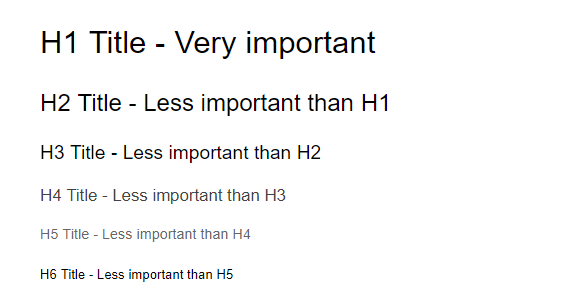
Each title has a certain amount of semantic information attached to it. With the help of these tags, editors and SEO experts can structure their content by ranking them by importance, thus making it easier to build the backbone of articles and webpages. Here's an example:
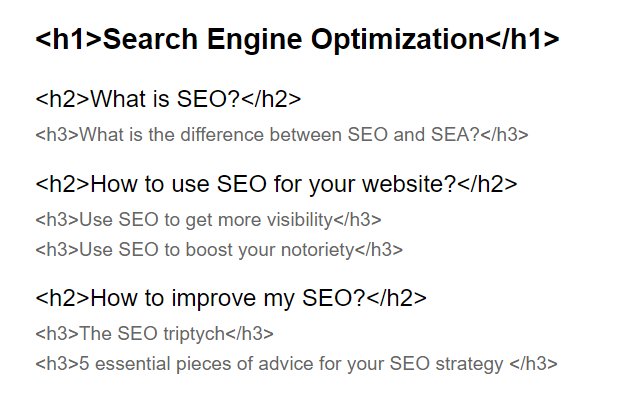
For your blogs and website, remember that the H1 title is the most important section. H2 and H3 are used to organize sub-sections, while H4, H5, and H6 are intended to provide additional information, with more details.
It is crucial for these tags to be optimized from an SEO perspective because these tags will help you better position yourself on strategic keywords.
Quick Tip: Place your page’s strategic keyword in the H1 tag, preferably at the beginning. This first-level title must be short and concise. If you want to target local SEO, add the name of the targeted town/county/region.
Related Article: 8 Ways to Drive More Traffic to Your Interior Design Website
SSL
Before we get started on this, what is SSL?
SSL stands for Secure Socket Layers and is a public key infrastructure that uses the RSA method of encryption and authentication via security certificates.
In easier words to understand, it helps establish a secure connection between the client and the server through the secure protocol HTTPS. It is a perfect choice for protecting sensitive information, such as customer contact details and credit card details.
So why do you need it?
1. SSL Protects Data
The main role of an SSL certificate is to protect server-client communication. The data is locked and can only be unlocked by the intended recipient (browser or server) as no one else can have the key to open it. As interior designers, we deal with sensitive information like credit card numbers, home addresses, etc., so an SSL Certificate helps protect you and your clients against skimmers and hackers.
2. Better Search Engine Ranking
In 2014, Google made changes to its algorithm in order to give the upper hand to HTTPS-enabled websites. In addition to providing a boost just for being installed properly, SSL also allows you to optimize your search ranking potential through mobile performance.
Google wants a page to be helpful with relevant results for specific search queries made on mobile phones. In fact, 88% of consumers do local searches on their smartphone – therefore a designer's site must be mobile friendly as this is an important factor for attracting prospects in a geographic area. That's where Accelerated Mobile Pages (AMP) comes in. The caveat, in order to take advantage of AMP, you have to have SSL.
3. Trust
No client would ever want to be on a site that hasn't taken safety precautions against hackers, so having an SSL Certificate gives your clients some peace of mind when handing over important information like email addresses, home addresses, credit cards, etc.
Meta Descriptions
First things first, what is a meta description?
According to Yoast, the meta description is an HTML tag you can set for a post or page of your website. In it, you can describe what your page is about. If you’re lucky, Google will show it beneath your page’s title in the search results. It brings you an opportunity to convince search engine users that your page will offer what they are looking for.
In Google’s search results, this is where it can be displayed:

Unfortunately, there is no guarantee that Google will display the meta description you’ve written, but, there's still a chance! So it's always worth the try to add it to your post or page.
Related Article: The Ins and Outs of SEO - What Interior Designers Need to Get Started
Tips to Writing Meta Descriptions
1. Keep it up to 155 characters
There is no right or wrong length when writing meta descriptions as it depends on the message you're trying to convey. You should make it long enough to get the message across, but also keep it short and sweet at the same time. I know, it's a fine line between genius and insanity. Here's an example to help you understand this a little better:

2. Use Your Focus Keyword
Google will be more inclined to use your meta description if the search keyword matches a part of your meta description text, so try to hone in on your keyword.

3. Include a Call-To-Action
Your meta description is where you sell yourself, except instead of trying to sell your service, you're trying to sell the page you want your readers to click on. CTAs like Learn More, Try Now, or Free Download are great ways to entice your reader into clicking your page over the rest.
Final Thoughts
Building your website effectively is just as important as laying a strong foundation in a home so I hope this article served as a guide for your website's SEO. And if after implementing these tips and strategies you find yourself hungry for more, go ahead and download my Free Guide on 25 Ways for You to Drive More Website Traffic:
Sign Up for Our Monthly Newsletter
Get helpful career, business, and design tips right in your inbox each month.
At Behind the Design, we are committed to building a stronger design community by reimagining education, training, and support for interior designers. Through our various software training options, educational articles covering everything from leadership to marketing, and soon Continuing educational courses, we are committed to helping you. Join our newsletter to get the latest education and training updates.










